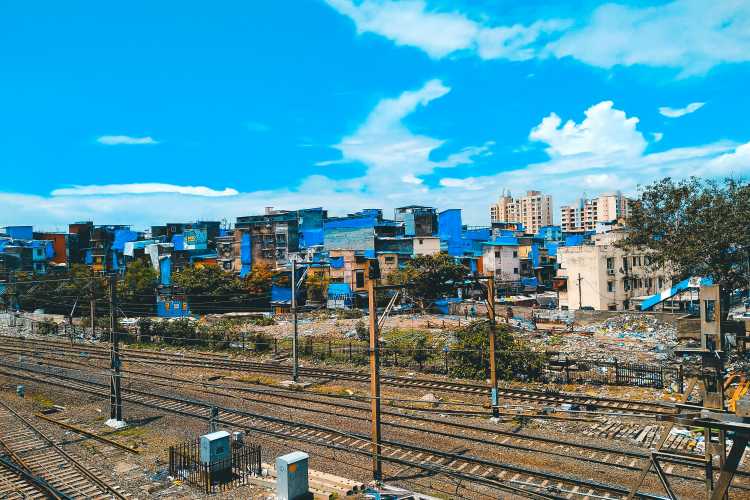
The Indian economy is projected to grow at a rate exceeding 7% in the upcoming years, positioning it to become the world’s third-largest economy within the next three years, according to a report titled ‘The Indian Economy — A Review‘ released by the ministry of finance. This announcement comes just days before the presentation of the interim Budget for 2024-25. Unlike previous years, where an Economic Survey was released a day before the Budget, this year’s process deviates due to the interim nature of the budget, with a comprehensive Economic Survey scheduled post-elections and the full budget.
India aims to reach a GDP milestone of $5 trillion in three years, fuelled by domestic demand, significant infrastructure investments, and initiatives to enhance manufacturing. This ambition is outlined in a report prepared by the Office of the Chief Economic Adviser, V Anantha Nageswaran. The report anticipates sustained growth rates of 7% or higher for FY24 and FY25, marking a remarkable post-pandemic economic resilience and potential.
READ | Indian middle class: Aspiring giants, still facing economic bumps
However, the report also highlights concerns over external risks, such as geopolitical tensions and the resurgence of pre-pandemic challenges, including supply chain disruptions. These factors could adversely impact global trade flows, transportation costs, economic output, and inflation.
The report identifies three emerging trends poised to shape global economies: the conclusion of the hyper-globalisation era in manufacturing, the rise of Artificial Intelligence (AI), and the energy transition challenge. It posits that India’s policy decisions over the past decade have positioned it well to navigate these challenges.
Hyper-globalisation’s decline is viewed with a balanced perspective, recognising both the influx of foreign direct investment and the integration into global supply chains as benefits, alongside the downsides of environmental degradation and rising inequality. Despite these shifts, India remains focused on enhancing logistics and product quality to maintain and expand its market presence.
Amidst the fading hyper-globalisation, another transformative force looms large: Artificial Intelligence. While AI promises productivity gains and economic diversification, its rapid integration raises critical questions about the evolving nature of work. Automation may displace jobs in certain sectors, particularly low-skilled roles, pushing India to prioritise education and reskilling initiatives. Skill development programs tailored to emerging needs will be crucial in ensuring a smooth transition for affected workers.
Furthermore, navigating the potential pitfalls of AI-driven inequality requires careful consideration. As algorithms shape opportunities, policy interventions and ethical frameworks must be designed to prevent the further marginalisation of vulnerable communities. Embracing AI’s potential while mitigating its risks will be key to shaping a future where technological progress benefits all facets of Indian society.
The rapid adoption of AI raises critical questions for service trade growth and employment, potentially diminishing the cost competitiveness advantage of countries exporting digital services.
The report also addresses the energy transition challenge, highlighting the pressure on developing countries reliant on fossil fuels. While international demands for cleaner energy are strong, support in technology and resources from developed nations has been lacking. India, however, is making significant strides in increasing its non-fossil fuel power generation capacity, surpassing its targets.
India’s impressive strides in renewable energy are a beacon of hope in the global fight against climate change. However, developing countries like India face considerable challenges in transitioning to cleaner energy sources. The stark reality is that financial and technological support from developed nations remains inadequate.
Innovative financing mechanisms, such as green bonds and carbon trading schemes, are urgently needed to bridge the resource gap and accelerate the adoption of clean energy solutions. International partnerships and knowledge sharing can play a crucial role in this endeavour. Only through a collective effort, where developed nations step up their commitments and developing nations like India continue their ambitious green initiatives, can we truly power a sustainable future for all.
Infrastructure development has seen unprecedented growth, with public sector capital investment tripling from FY15 to FY24. This includes extensive work on highways, freight corridors, airports, metro networks, and trans-sea links.
The report emphasises the importance of female labour force participation for India’s future economic growth. Initiatives have been successful in increasing female participation to 37% in 2022-23 from 23.3% in 2017-18, alongside improvements in the sex ratio at birth and reductions in maternal mortality rates.
As India approaches its $5 trillion economy goal, the focus shifts towards achieving a $7 trillion economy by 2030. However, inclusive development remains a challenge. The Jan Dhan Yojana, which added 51 crore bank accounts with over 55% held by women, represents significant progress. Yet, the report calls for a deeper examination of financial inclusion among marginalised communities to ensure no one is left behind in India’s economic ascent.
Way ahead for Indian economy
As India marches towards its $7 trillion vision, the imperative of inclusive growth cannot be overstated. While headline economic figures may paint a rosy picture, entrenched inequalities pose a significant challenge. Marginalised communities often lack access to quality education, healthcare, and decent jobs, hindering their ability to participate in the fruits of economic prosperity. To create a truly equitable future, targeted investments in education infrastructure and skill development programs in underserved areas are crucial.
Strengthening social safety nets and promoting micro-entrepreneurship and financial inclusion can empower vulnerable communities and bridge the economic divide. Ultimately, the success of India’s economic journey will be measured not just by the size of its GDP, but by the extent to which it lifts all boats, ensuring that every citizen shares in the prosperity and progress.
